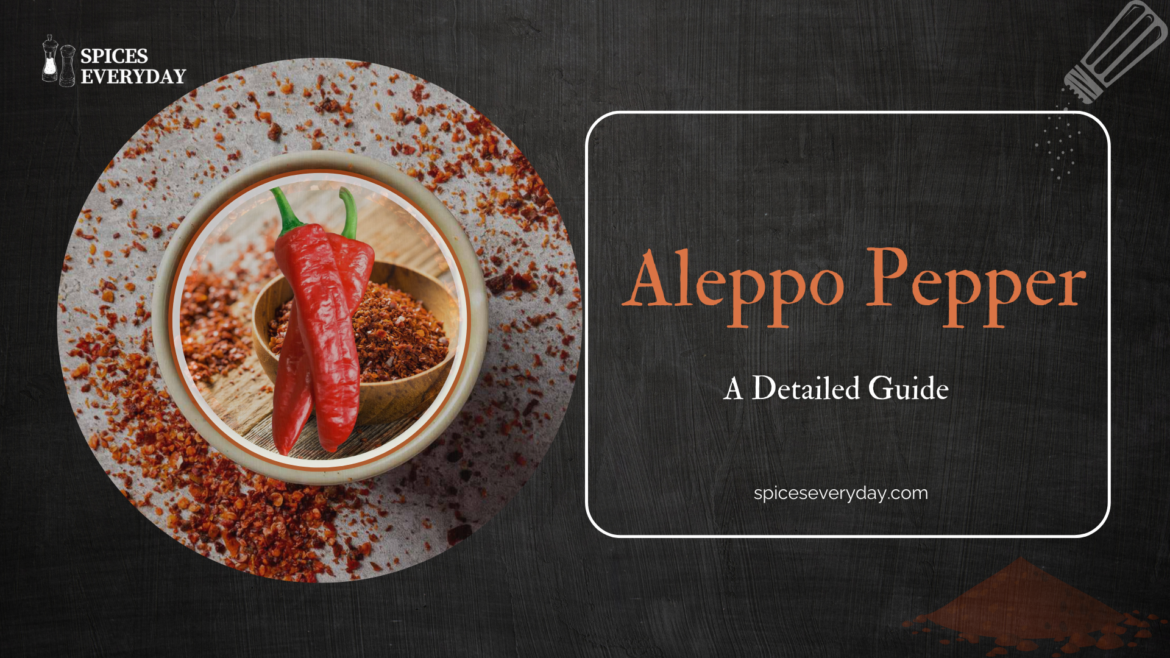Table of Contents
Middle Eastern dishes are known for their versatile flavor notes and ingredients. They are a treasure trove for a variety of spices, and one such hidden gem is the Aleppo pepper. Just like sumac spice, it is a Middle Eastern seasoning that is added to recipes to elevate their flavor note. Referred to as Halaby pepper, Aleppo pepper is made of deep red chili flakes and has a mild, tangy flavor with a fruity finish. In this article guide, we will unravel the taste profile of Aleppo pepper with its recipe variations to make your next meal a star of the dining table.
What is Aleppo Pepper?
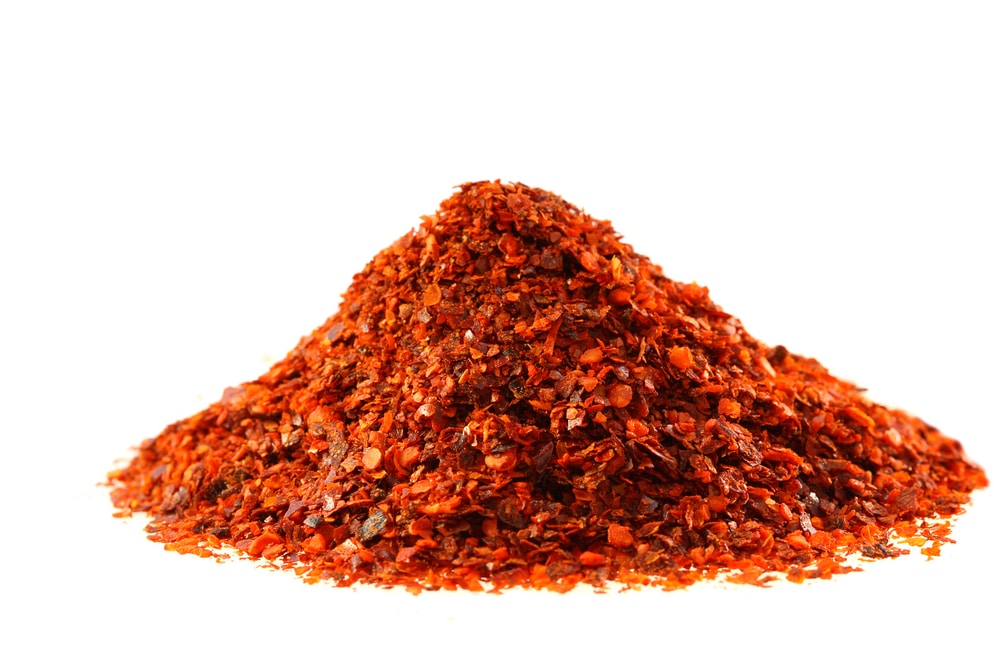
Aleppo pepper, also known as Halaby pepper, is a vibrant red spice hailing from Aleppo, Syria, and a star in Middle Eastern cuisine. With its mild heat, fruity undertones, and subtle cumin-like flavor, it adds a unique depth to any dish. Whether you’re a pro chef or a home cook, this spice brings a flavorful twist to your recipes.
- Adds mild heat and a rich, fruity depth to dishes.
- Perfect for sprinkling on roasted veggies, meats, or eggs.
- Blends beautifully into marinades, soups, and stews.
History and Qualities of Aleppo Pepper
Culinary Uses of Halaby Pepper
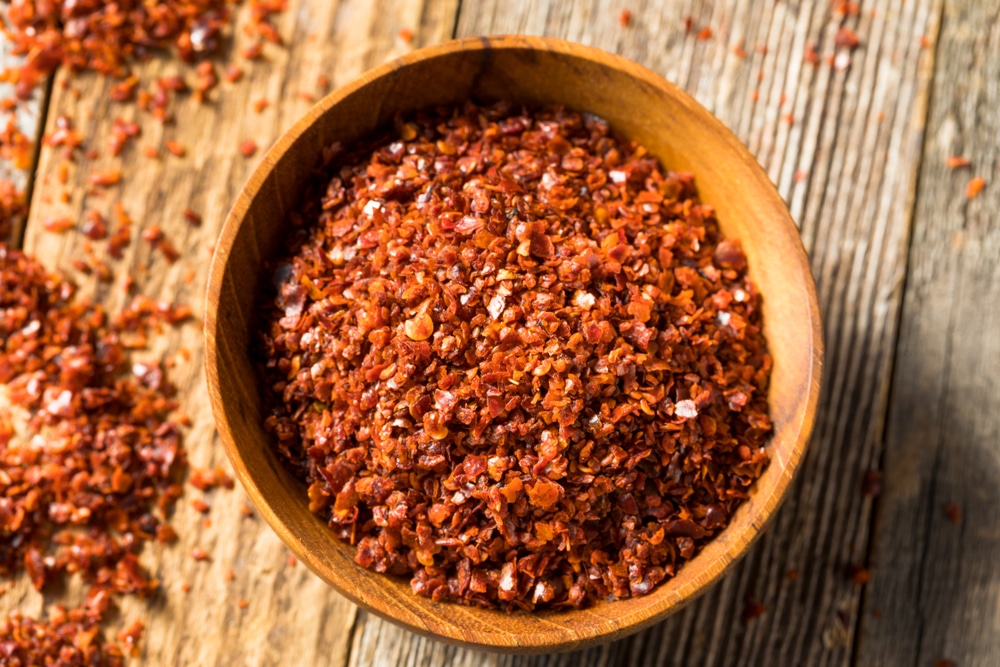
One of Aleppo pepper’s best qualities is how versatile it is in the kitchen. Here are a few recipes that you can create with this spice:
1. Meat and Vegetable Seasoning: For a savory kick, sprinkle Halaby pepper over grilled chicken, roasted veggies, or even scrambled eggs. Its mild heat enhances but doesn’t overshadow the flavors of the components.
2. Legumes and Soups: To add a warm, earthy taste to soups and stews, add a teaspoon of Halaby pepper. It goes especially well with chickpea meals, tomato-based stews, and lentil soup.
3. Marinades and Dressings for Salads: Add richness and depth to marinades and vinaigrettes by including Halaby pepper. A dash of Aleppo pepper elevates the simple lemon and olive oil dressing.
4. Spice Mixtures: Halaby pepper can be used with other spices, such as cumin, coriander, and sumac, to create your own spice blends. This works well as a spice for roasted nuts or as a rub for meats. In addition, crushed red pepper or cayenne pepper can be used in spice blends as a substitute for Aleppo pepper.
5. Garnishes: Add a pinch of Halaby pepper to foods such as avocado toast, baba ghanoush, and hummus. It is the ideal garnish because of its bright color and distinct flavor.
Health Advantages of Aleppo Pepper
Halaby pepper is a culinary favorite that also has a number of health advantages.
1. Antioxidant-Rich: Antioxidants found in abundance in Aleppo pepper help shield the body from harmful free radicals and lower inflammation. Among these antioxidants are the vitamins A and C, which are both necessary to keep the immune system functioning properly.
2. Enhances Metabolism: Because capsaicin in Aleppo pepper increases the body’s capacity to burn fat, it could help increase metabolism and encourage weight loss. Additionally, capsaicin has been shown to decrease appetite, which facilitates better calorie management.
3. Promotes Digestive Health: Aleppo pepper’s mild taste can activate digestive enzymes, promoting better nutritional absorption and digestion. Additionally, it can help reduce bloating and digestive problems.
4. Anti-Inflammatory: Aleppo pepper’s antioxidants and capsaicin have anti-inflammatory qualities that could potentially lower the chance of developing chronic illnesses, including arthritis and heart disease.
Alternatives to Aleppo Pepper
- Ancho Chili Powder: This substitution for Aleppo pepper is sweet, smoky, and mildly spicy. Make use of a 1:1 ratio.
- Red pepper flakes, crushed: Ideal replacement for Aleppo pepper. It is a strong heat blast. Use half of that quantity.
- A mixture of Cayenne and Paprika: Mix one part cayenne with three parts paprika to make a flavorful Aleppo pepper substitute.
- Urfa Biber: Urfa Biber’s flavor is raisin-like and smoky. The Right amount makes a great substitute for Aleppo pepper.
- Gochugaru: A smokey, sweet flavor. Make use of a 1:1 ratio.
Creative Halaby Pepper Recipes
Here are several dishes that highlight the flavor and adaptability of Halaby pepper:
Roasted Chicken with Aleppo Pepper
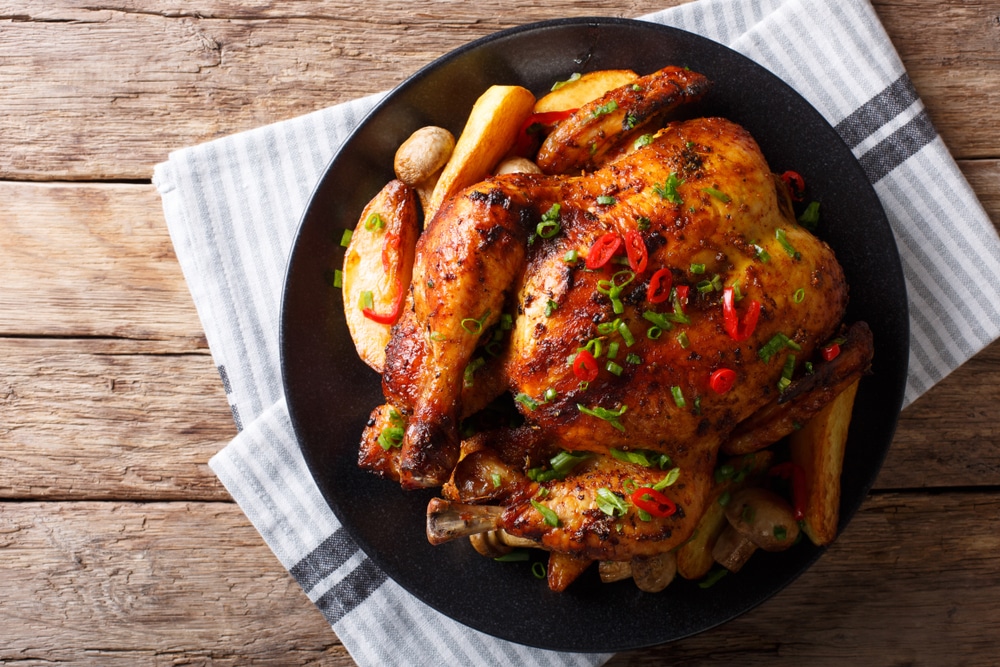
Ingredients
- Four chicken thighs
- Olive oil in two tablespoons
- One teaspoon each of ground cumin, garlic powder, and Halaby pepper
- Season with salt and pepper
- Garnish with lemon wedges
Instructions
1. Set the oven’s temperature to 400°F or 200°C.
2. Combine the olive oil, cumin, garlic powder, Halaby pepper, salt, and pepper in a small bowl.
3. Evenly rub the chicken thighs with the spice mixture.
4. After putting the chicken on a baking sheet, roast it for 35 to 40 minutes, or until the meat is cooked through and the skin is crispy.
5. Present with wedges of lemon.
Feta and Aleppo Pepper Salad
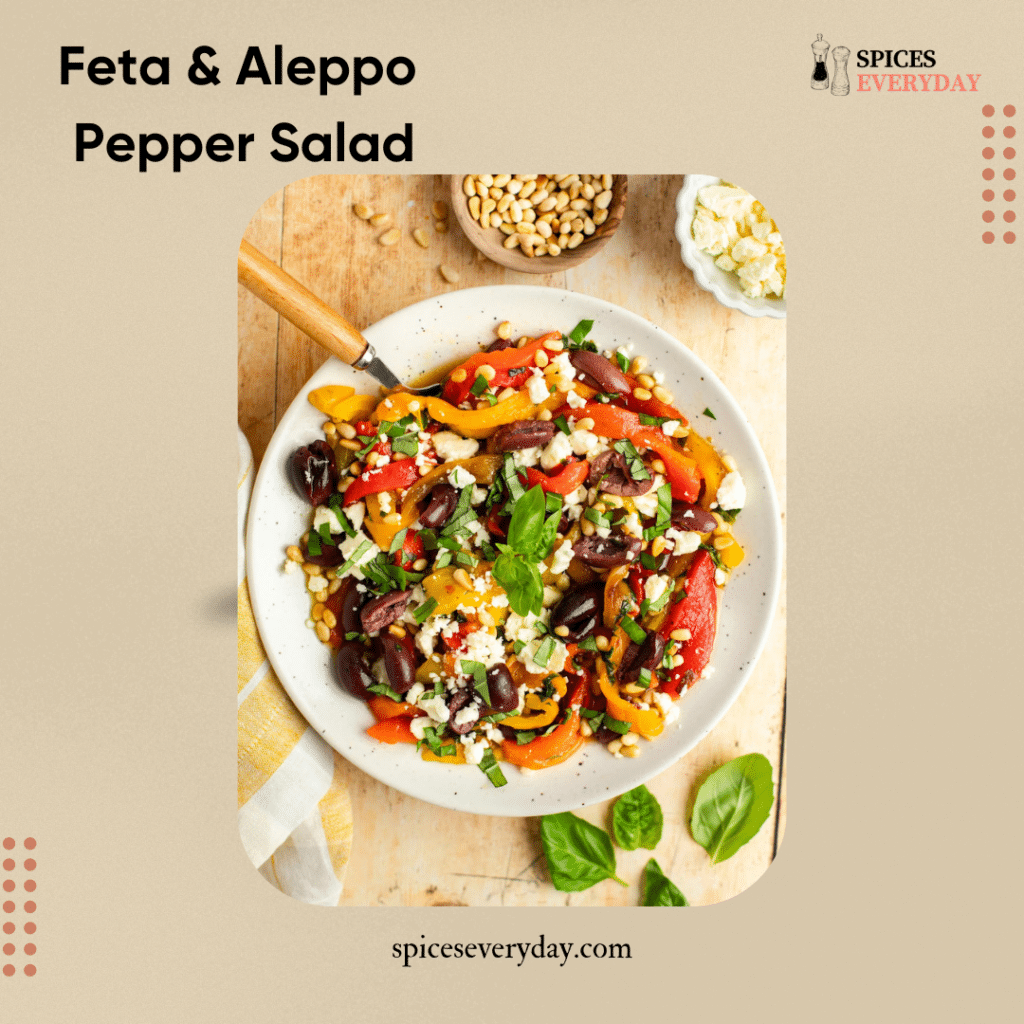
Ingredients
- Four cups of mixed greens
- 1/2 red onion, thinly sliced
- 1 cup chopped cherry tomatoes
- One cucumber
- 1/2 cup crumbled feta cheese
- Two tablespoons of olive oil
- One tablespoon of lemon juice
- One teaspoon of Halaby pepper
- Salt and pepper
Guidelines
1. Combine the red onion, cucumber, cherry tomatoes, and mixed greens in a large salad dish.
2. In a small bowl, Combine the olive oil, lemon juice, Halaby pepper, salt, and pepper.
3. Pour the salad with the dressing and toss to mix.
4. Sprinkle feta cheese crumbles on top and serve.
Halaby Pepper Hummus
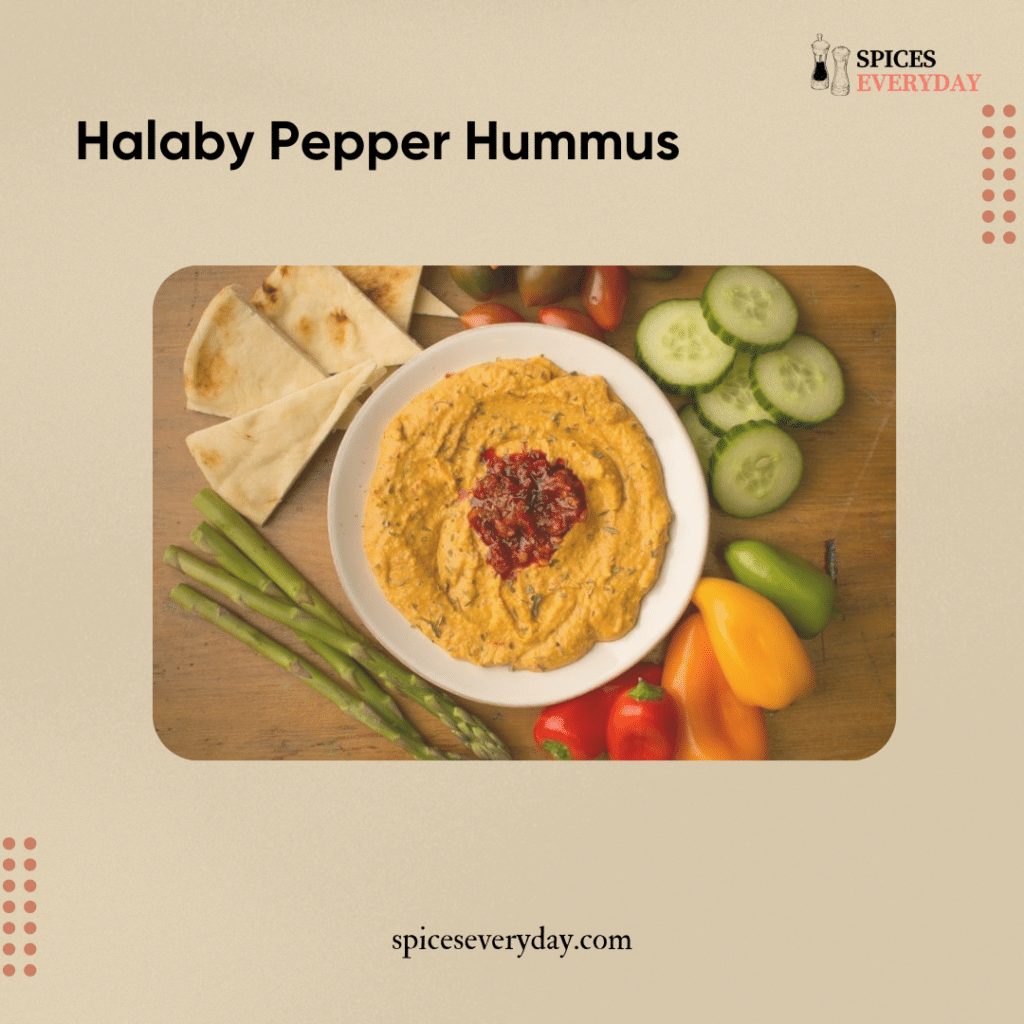
Ingredients
- Two tablespoons tahini
- Two tablespoons of lemon juice
- One can of washed and drained chickpeas
- Two tablespoons of olive oil
- One teaspoon of Halaby pepper
- One chopped garlic clove
- Salt to taste
Guidelines
1. Put the garlic, olive oil, lemon juice, tahini, and chickpeas in a food processor.
2. Blend until smooth, adding water to achieve the right consistency if necessary.
3. Add the salt and Halaby pepper and stir.
4. Move to a serving bowl and pour some more olive oil over it. Add a pinch of Halaby pepper as a garnish.
You can check out other recipes with Aleppo pepper in this article.
Conclusion
Wrapping up, the article covered a versatile staple of the Middle Eastern region, i.e., Aleppo pepper. If you want a zesty kick in your ordinary meals, this spice is a must-try. You can create different recipe variations using this ultimate spice and wow your guests.

